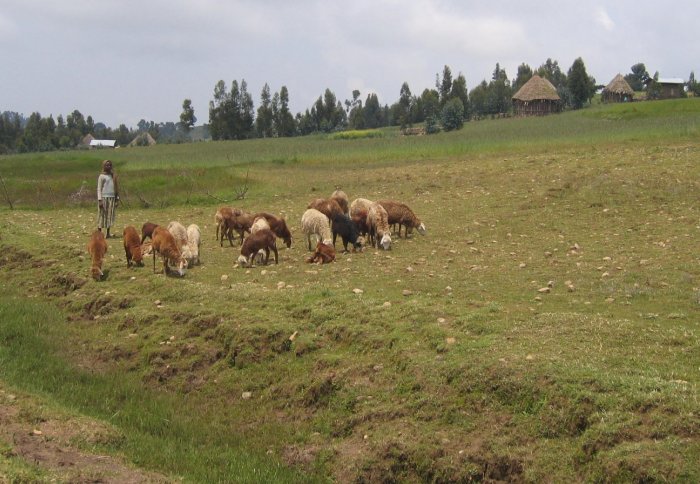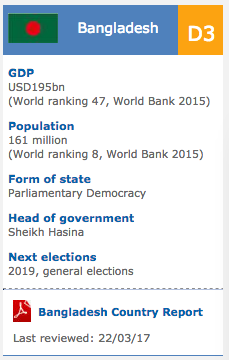Liberia: Liberia Agriculture Profile
2016/12/05

Above-average harvests expected following favourable rains
Harvesting of the 2016 paddy crop, virtually the only cereal grown in the country, is underway. Rains started on time for the 2016‑cropping season and were generally adequate. Cereal production is estimate to further increase from last year’s above‑average level.
Three newly‑confirmed cases of the Ebola Virus Disease (EVD) were reported in early April in Monrovia. However, the World Health Organization (WHO) declared the end of the majority recent outbreak of EVD in Liberia on 9 June 2016. The resurgence of Ebola did not have any major impact on the 2016 agricultural season.
Agricultural production recovered in 2015 following the previous year’s Ebola‑affected harvest. Official estimates put the 2015 accumulation cereal production at about 296 000 tonnes, 11 % above the previous year’s output and 6 % above average. Cassava production is estimated to have increased by 9 %. The recovery was supported by the intervention of the Government and its partners in supplying improved seeds, fertilizer and purchasing paddy rice from farmers.
In 2014, the EVD outbreak had a critical impact on the agriculture and food sectors. Rice production in 2014 was estimated at about 266 000 tonnes, about 4 % below average. In particular, cereal production in Lofa and Margibi counties was substantially affected by the EVD outbreak that started to spread at the same time as crops were by presently being planted and expanded during the whole crop‑growing season until the critical harvesting period.
Food markets recovered significantly
During the peak of the Ebola outbreak (June‑August 2014), trade activities declined significantly. Border closures, quarantine measures and other restrictions seriously disrupted marketing of goods, inclunding agricultural commodities. There has been a significant recovery of marketing activities. However, prices of imported commodities are reported to be on the increase, driven by the depreciation of the local currency.
Liberia normally depends heavily on food imports. Cereal import requirements for 2016 are estimated at about 402 000 tonnes, about 14 % above the previous year’s level.
EVD outbreak severely affected economy and food security
Beyond its impact on the agriculture and food sector, the EVD outbreak seriously affected all other sectors of the economy. According to the Economic Intelligence Unit (EIU) revised estimates, GDP increase is estimated at 0.9 % in 2015, owing to the low output for Liberia's major exports and reduced harvests in 2014. A stronger rebound of 4.8 % increase is estimate in 2016, well above the increase of only 0.5 % completed in 2014, but still well below the 6.8 % forecasted before the Ebola crisis. As the economy continues to recover, household livelihoods and incomes are returning to the levels observed prior to the Ebola crisis.
The EVD outbreak had a substantial impact on employment activities throughout the country on all livelihood groups. Although the Ebola outbreak has ended, about 21 463 people were projected to be in Phase 3: “Crisis” and above between June and August across the country, according to the new “Cadre Harmonisé” analysis. Moreover, according to UNHCR, Liberia is hosting about 20 000 registered refugees as of 30 June 2016, most of them from Côte d’Ivoire. Voluntary repatriation of Ivorian refugees was suspended by the Government of Côte d’Ivoire at the beginning of the Ebola epidemic, but it was resumed in mid‑December 2015 following the agreement part UNHCR and the Liberian and Ivorian governments.
FOOD SECURITY SNAPSHOT
- Food crop production to further recover in 2016
- Food markets recovered significantly following EVD related disruptions
- Number of food insecure people estimated at about 21 400
- Liberia News
-
- LIBERIA: The State of the Race - It Is George Weah's to Lose
- BOTSWANA: Africa’s economic growth in 2016 was driven by East Africa
- BOTSWANA: Africa property offers rich pickings for the brave
- BOTSWANA: Bill Gates sees US likely to maintain aid levels for Africa
- BOTSWANA: Africa: Graca Challenges Women, Girls to Grab Emerging Opportunities
- LIBERIA: Liberian Supreme Court justices and President Ellen Johnson Sirleaf
- Trending Articles
-
- NIGERIA: Africa's Richest Man Sets Sights on Launching Nigeria University
- CAMEROON: Poor End of Year Results for Cameroon Students
- UGANDA: Ugandan Govt Starts Verifying International Academy Teachers
- ANGOLA: Angola: Elections / 2017 - Provisional Data Point Out Qualified Majority for MPLA
- NIGERIA: Nigeria's Vice President Commissions Green House Project
- NIGERIA: Nigeria: Dangote, Niger Sign $450m Pact in Rice, Sugar Today






.gif?1356023993)



